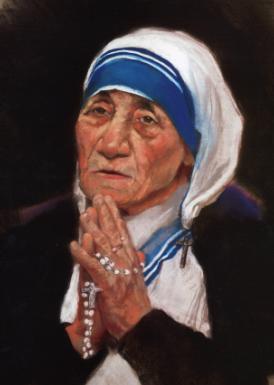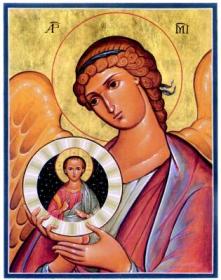Yesterday the new constitution of the world’s newest state, the Republic of Kosovo, came into force. Few Americans know the history of this small, land-locked Balkan nation. The usual American ignorance of all things foreign is compounded, in this instance, by layers of the nationalistic propaganda endemic to the Balkans, which make the truth hard to discover even if one goes looking for it. In my next few posts I hope to cut through the ignorance and the nonsense to shed some light on Kosovo. In my first post I will give an introduction to the Albanian people, which constitutes the majority of the population of Kosovo, focusing in particular on their religion.
The precise origin of the Albanians is lost in the mists of time, but it is generally believed that they are descendants of a pre-Slavic Balkan population. A combination of linguistic and historical evidence suggests that they might have been partially Romanized Dacians living in what is now the Hungarian-Romanian border region, who fled to what are now northeast Albania, Kosovo, and northwest Macedonia to escape the invading Huns in the fifth century.
Speaking an Indo-European language with no extant close relatives, the Albanians are divided into two sub-groups, each with its own dialect. The Tosks of southern Albania were traditionally Eastern Orthodox, and the Ghegs of northern Albania were traditionally Roman Catholic. In the centuries following the Turkish conquest, a majority of Albanians converted to Islam, but in the early 20th century about 30% of the population of Albania remained Christian. Smaller percentages of Albanians in Kosovo and Macedonia remained Catholic. Many of the Muslims, moreover, were only nominally so, and Islamic practice was not particularly rigorous. Bektashism, a liberal Sufi/Shi’a sect, is quite popular among Albanians. It is sometimes considered a crypto-Christian sect, as its members retain many Christian practices such baptism, communion, three ranks of clergy, venerating saints and icons, and drinking wine. But it also exhibits Gnostic tendencies and teaches reincarnation.
For the most part, the Orthodox tended to be concentrated in the south near Greece, the Catholics in the north near Montenegro, and the Muslims in the middle, with Sunnis in the cities and Bektashis in more remote areas. But Albanian identity was stronger than any religious identity, and members of the different religions mixed and intermarried freely. The relative weakness of religious identity was probably compounded by the fact that none of the religions offered worship in the Albanian vernacular, but only in Greek, Latin, and Arabic, respectively.
Because the Albanians were not united by religion, Albanian nationalism in the 19th and early 20th centuries was a secular movement, downplaying if not actually suppressing religion. Then, in the 1960s the communists who ruled Albania, enamored of Maoism, followed China in instituting a Cultural Revolution. They abolished all religion, and it became illegal even to celebrate Christmas privately in one’s own home. Churches and mosques alike were demolished or converted into “cultural centers.” Many clergy who did not renounce their faith were imprisoned. As a result of the two decades of official atheism, 60-70% of Albanians today do not practice any religion, though they might retain a nominal religious identity. The Albanian population of neighboring Yugoslavia, including Kosovo, however, did not face such extreme forms of persecution.
Dode Gjergji, the Catholic Bishop of Kosovo, reportedly intends to re-convert the population of Kosovo to Catholicism – and he does not expect this to be a particularly difficult task. He says that Albanians converted to Islam only because of Turkish pressure and that they remain friendly to Christianity. Indeed, many Muslim Ghegs retain two names, an official Muslim name and an unofficial Catholic name, and they remember exactly how many generations it has been since their ancestors were Catholic. But Bp. Gjergji is taking nothing for granted. He plans to secure the prayers of one of the 20th century’s greatest saints – and the world’s most famous Albanian – by dedicating his new cathedral to Mother Teresa of Calcutta.
The precise origin of the Albanians is lost in the mists of time, but it is generally believed that they are descendants of a pre-Slavic Balkan population. A combination of linguistic and historical evidence suggests that they might have been partially Romanized Dacians living in what is now the Hungarian-Romanian border region, who fled to what are now northeast Albania, Kosovo, and northwest Macedonia to escape the invading Huns in the fifth century.
Speaking an Indo-European language with no extant close relatives, the Albanians are divided into two sub-groups, each with its own dialect. The Tosks of southern Albania were traditionally Eastern Orthodox, and the Ghegs of northern Albania were traditionally Roman Catholic. In the centuries following the Turkish conquest, a majority of Albanians converted to Islam, but in the early 20th century about 30% of the population of Albania remained Christian. Smaller percentages of Albanians in Kosovo and Macedonia remained Catholic. Many of the Muslims, moreover, were only nominally so, and Islamic practice was not particularly rigorous. Bektashism, a liberal Sufi/Shi’a sect, is quite popular among Albanians. It is sometimes considered a crypto-Christian sect, as its members retain many Christian practices such baptism, communion, three ranks of clergy, venerating saints and icons, and drinking wine. But it also exhibits Gnostic tendencies and teaches reincarnation.
For the most part, the Orthodox tended to be concentrated in the south near Greece, the Catholics in the north near Montenegro, and the Muslims in the middle, with Sunnis in the cities and Bektashis in more remote areas. But Albanian identity was stronger than any religious identity, and members of the different religions mixed and intermarried freely. The relative weakness of religious identity was probably compounded by the fact that none of the religions offered worship in the Albanian vernacular, but only in Greek, Latin, and Arabic, respectively.
Because the Albanians were not united by religion, Albanian nationalism in the 19th and early 20th centuries was a secular movement, downplaying if not actually suppressing religion. Then, in the 1960s the communists who ruled Albania, enamored of Maoism, followed China in instituting a Cultural Revolution. They abolished all religion, and it became illegal even to celebrate Christmas privately in one’s own home. Churches and mosques alike were demolished or converted into “cultural centers.” Many clergy who did not renounce their faith were imprisoned. As a result of the two decades of official atheism, 60-70% of Albanians today do not practice any religion, though they might retain a nominal religious identity. The Albanian population of neighboring Yugoslavia, including Kosovo, however, did not face such extreme forms of persecution.
Dode Gjergji, the Catholic Bishop of Kosovo, reportedly intends to re-convert the population of Kosovo to Catholicism – and he does not expect this to be a particularly difficult task. He says that Albanians converted to Islam only because of Turkish pressure and that they remain friendly to Christianity. Indeed, many Muslim Ghegs retain two names, an official Muslim name and an unofficial Catholic name, and they remember exactly how many generations it has been since their ancestors were Catholic. But Bp. Gjergji is taking nothing for granted. He plans to secure the prayers of one of the 20th century’s greatest saints – and the world’s most famous Albanian – by dedicating his new cathedral to Mother Teresa of Calcutta.


